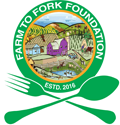Isolation and characterization of bacterial endophytes from weeds against Pseudomonas syringae pv. syringae causing bacterial canker of stone fruit trees
DOI:
https://doi.org/10.5455/faa.26526Keywords:
antagonistic bacteria, biological control, endophytic bacteriaAbstract
This research was conducted to evaluate the inhibitory effect of endophytic bacteria isolated from some common weeds of stone fruits orchards on Pseu- domonas syringae pv. syringae (Pss). Weeds samples were collected from stone- fruit orchards in the northwest of Iran during the year 2017-2019. Bacterial strains were isolated from the plant samples using different culture media then chloroform test was applied to evaluate the antagonistic properties of bacterial isolates. Among 112 bacterial isolates, 34 strains showed inhibitory effects against Pss. Subsequently, three isolates with higher inhibitory capa- bility were selected for supplementary assay. 16s rDNA sequencing results indicated that the selected endophytic bacteria with 99% probability could belong to Bacillus simplex, Bacillus mycodies, and Arthrobacter sp. Study of the effective mechanisms of these three bacterial isolates showed that Bacillus simplex with 181.76 mg/L auxin production had the highest auxin production capability in comparison to the other species but in hydrogen cyanide pro- duction assay, Bacillus mycoides were the only one which showed producing hydrogen cyanide.
Downloads
Downloads
Published
How to Cite
Issue
Section
License
Copyright (c) 2022 by Authors

This work is licensed under a Creative Commons Attribution-NonCommercial 4.0 International License.




















